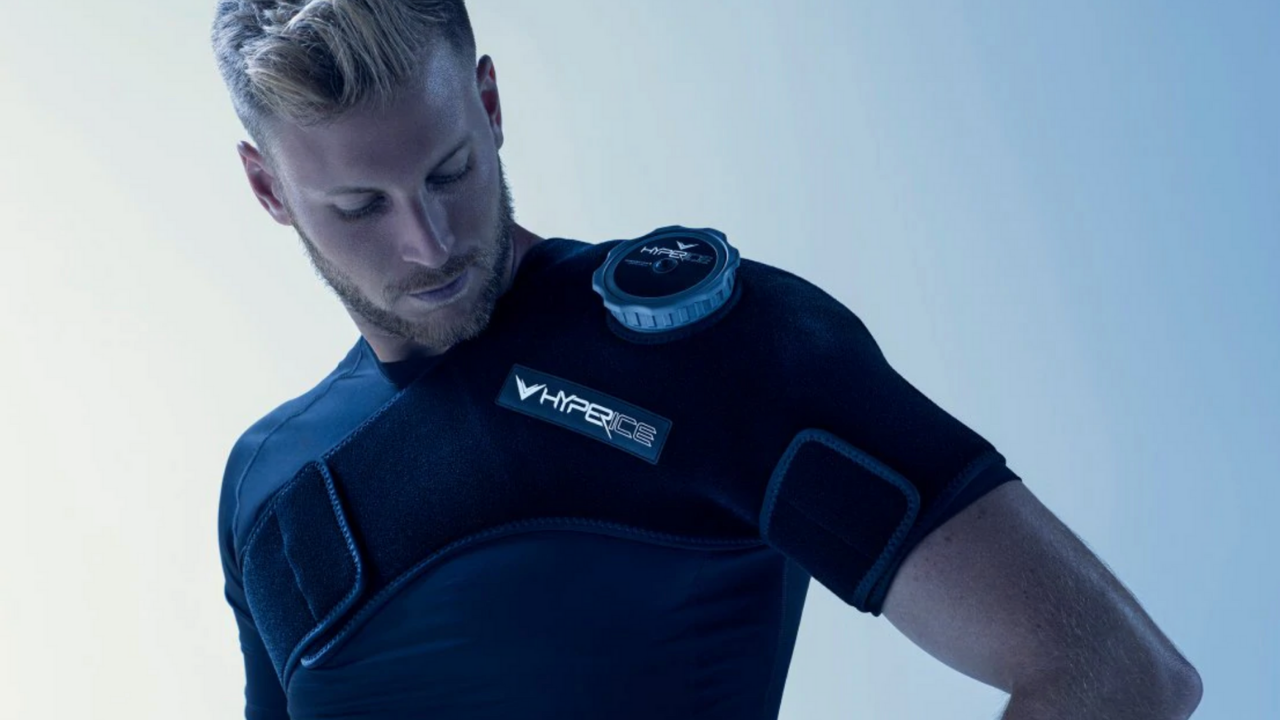
We have all hurt ourselves at some point in time. Whether it was a twisted ankle or a sprained wrist, the first thing we’ve all done was reached out for that pack of ice in the freezer.
Bags of crushed ice and cold gel pack bandaged to ankles, knees, or wrist are commonly observed in the locker rooms of athletes.
But have you ever wondered why we ice our injuries?
Ice is not just a simple at-home, tried and tested tool for the treatment of injuries. For years, doctors have used it for reducing swelling, easing pain, and hastening recovery.
Ice compression therapy also known as cold compression therapy is a first-aid for injuries related to the muscle, ligaments, or tendons. It is medically approved therapy not just for minor sprains and strains, but also for a wide variety of post-surgical pain and swelling. (1)
Let’s explore the much-loved ice compression therapy in depth. Here we will discuss how ice therapy works, the conditions benefited by it, and the scientific basis for it. We will also give you a guide on the proper ways to do cold compression therapy, how it benefits soft tissue injuries and who it is not meant for.
Read on!
What is Ice compression?
Ice compression is the application of any cold substance or physical medium to the body which removes heat. It results in a decrease in the temperature of the contact area and tissues surrounding it. (2)
Cold compression therapy combines the principle of RICE (rest, ice, compression, and elevation) to reduce the pain and swelling associated with soft tissue injuries related to physical activity, acute sports injuries, or following a surgical procedure.
It is the best management practice in the first 24-48 hours following an acute soft tissue injury. When used properly, ice compression can reduce pain, discomfort and improve recovery time. (3)
The following things can be utilized for ice compression therapy:
- An ice cube wrapped in a plastic bag, washcloth, or towel
- A frozen gel pack
- A bag of frozen vegetables (peas) wrapped in a washcloth
- An instant chemical cold pack
- A plastic freezer bag filled with water which has been frozen for at least an hour
How does Ice compression work?
Ice compression therapy uses cryotherapy and static compression in combination. Cryotherapy is the use of low temperature in therapeutic settings and is one of the most widely used treatments in orthopedic medicine. (4)
The application of ice over the injured site will lower the temperature of the tissue. This will cause the vessels to contract which can stop the bleeding. Cold-induced decrease in blood flow can slow the delivery of mediators of inflammation. This results in decreased local inflammation and swelling.
By restricting blood flow to the area, the cold temperature will cause a temporary reduction in nerve activity. This will lead to numbness, providing relief from the pain associated with acute soft tissue injury. Ice therapy is known to reduce muscle spasms that frequently accompany sprains and strains. Reducing the temperature of the muscle, cold compression inhibits a spinal cord reflex that is responsible for spasms of the muscle.
Cold compression therapy also reduces the metabolic demand of the tissue. This limits the risk of cell death and ensures that it can survive in the post-injury period. (2)
What are the benefits of Ice compression?
Cold and compression are routinely applied after acute injury or surgery. It lowers the blood flow by as much as 60% and this effect can persist for up to 30 minutes after. (5)
The top benefits of ice compression are:
- Provides pain relief
- Decreases or stops bleeding
- Reduces inflammation and swelling
- Limits bruising
- Speeds functional recovery
- Helps in recovery after surgery or an intense workout
Apart from surgical and orthopedic applications, ice compression can also be used for cosmetic purposes. Cold compression of the face can eliminate eye puffiness, soothe sunburn, ease acne, reduce inflammation, pores, and wrinkles, and brighten your complexion.
Is there a scientific basis for Ice Compression?
There is a considerable amount of scientific and experimental evidence to support Ice compression therapy.
A systematic review of 4 randomized controlled trials evaluated the efficacy of cold therapy. It reported that there was a positive effect on return to work and sports following injury in study participants. (2)
Another study reported that daily and multiple application of ice was superior to not using anything for reducing muscle soreness 24 hours after exercise. There was also a greater range of motion and lower values of enzymes aspartate aminotransferase and creatinine kinase (blood markers of muscle damage) in participants who employed cold therapy. (6)
Findings from controlled trials of knee arthroplasty showed that cold compression provided better outcomes like pain relief than other interventions. (5)
Yet another study assigned 143 patients of an acute ankle injury to cold compression. There was a modest difference between patients who received cold compression versus those who received only compression in terms of injury severity improvement, amelioration of swelling, and the ability to bear weight. (7)
Patients undergoing reconstruction of the knee ligament were evaluated for post-operative swelling, return to function, range of motion, and requirement for painkillers. Those patients treated with cold compression reported improvements in the study parameters. (8)
What is the proper way to do Ice compression?
Follow other steps in the RICE method for ice compression therapy to be effective. The four elements of the treatment of soft tissue injury are:
- Rest: Avoid using the injured area. Use crutches, canes, splints, or braces when required.
- Ice: put a cold compress as soon as possible or within the first 48 hours of injury. This can be done four to eight times a day, each session lasting 10 minutes. (9)
- Compression: Wrap the injured area with a bandage. This will provide support and reduce swelling and is effective for up to a week.
- Elevation: keep the injured area above the level of your heart to minimize the swelling, for at least 2-3 hours a day
You can combine RICE therapy with an anti-inflammatory and pain-relieving medication like Non-steroidal anti-inflammatory drugs (NSAIDs) such as Ibuprofen.
Some things to keep in mind while doing ice compression are:
1. Do not apply the ice directly over the skin. Always use a barrier between the skin and the ice pack to prevent damaging the skin, nerves, and blood vessels
2. Do not apply cold compression for more than 10 minutes as it can be detrimental to the healing process. Prolonged application of ice can increase the risk of nerve damage. It can also worsen the degree of damage by excessively reducing the blood flow. A 10-minute ice treatment followed by a 10 minute recovery period without the use of ice is considered to be the most effective.
3. It is important to monitor the length of time and the temperature of the skin if you are diabetic or suffer from other conditions which impair the perception of heat and cold.
4. Do not apply ice to open wounds or skin that is cut in any way.
5. Do not use ice therapy for serious injuries.
6. It is best to avoid ice therapy if you have circulatory problems.
7. Remove the ice immediately, if you notice your skin becoming too cold and white.
See a doctor for evaluation:
- If the ice compression does not relieve your pain,
- If the area is misshapen due to significant swelling or is numb,
- If it does not bring improvements within 48-72 hours,
- If you cannot put weight on the area,
- If the injury is recurring
What are the conditions benefited by ice compression therapy?

- Acute injury with swelling (eg. muscle strains, sprains, bruises, tendonitis, etc.)
- Following physical activity (this can reduce the wear and tear of the muscles and joints)
- Osteoarthritis and gout (cold therapy can ease the burning pain)
- Prophylaxis for chronic orthopedic sports injuries (tennis elbow)
- Post-operative pain and swelling
- Fever
- Hemorrhoids
- Eye allergies
- Headaches or Migraines
What are the safety precautions to follow while doing Ice compression?
Ice compression should not be used right before participating in sporting activities or vigorous exercise.
It is also not recommended for people with extensive soft tissue or bone injuries.
The following people should exercise caution while doing cold compression:
- Those suffering from cold hypersensitivity diseases like Raynaud’s syndrome, paroxysmal cold hemoglobinuria, diabetes, and cold urticaria
- Those who have circulatory insufficiency
- In babies, as they may not be able to tolerate cold temperature
- Hypertensives
- Those with mental impairment (2)
The benefits of ice compression diminish with time. Therefore the intervention is thought to be the most effective when used immediately after an injury or after a surgical procedure.
What are the complications of ice compression?
If used inappropriately, ice compression can put you at risk for:
- Frostbite
- Pain
- Allergic reactions
- Cold intolerance
- Neuropathy of superficial nerves (2)
The bottom line
Ice compression therapy is an easy way to reduce swelling and pain and help stop bleeding following acute injuries. They can relieve the pain and prevent the injury from getting worse. Combining ice compression with rest and elevation of the injured part can help your body recover faster. Injuries happen to the best of us, but knowing how to deal with them properly will save you from profound damage.
References
1. Cohn, B T et al. “The effects of cold therapy in the postoperative management of pain in patients undergoing anterior cruciate ligament reconstruction.” The American journal of sports medicine vol. 17,3 (1989): 344-9. doi:10.1177/036354658901700306
2. Malanga, Gerard A et al. “Mechanisms and efficacy of heat and cold therapies for musculoskeletal injury.” Postgraduate medicine vol. 127,1 (2015): 57-65. doi:10.1080/00325481.2015.992719
3. Hubbard, Tricia J, and Craig R Denegar. “Does Cryotherapy Improve Outcomes With Soft Tissue Injury?.” Journal of athletic training vol. 39,3 (2004): 278-279
4. McDowell, J H et al. “Use of cryotherapy for orthopedic patients.” Orthopedic nursing vol. 13,5 (1994): 21-30. doi:10.1097/00006416-199409000-00006.
5. Block, Jon E. “Cold and compression in the management of musculoskeletal injuries and orthopedic operative procedures: a narrative review.” Open access journal of sports medicine vol. 1 105-13. 7 Jul. 2010, doi:10.2147/oajsm.s11102
6. Oakley, Elizabeth T et al. “The effects of multiple daily applications of ice to the hamstrings on biochemical measures, signs, and symptoms associated with exercise-induced muscle damage.” Journal of strength and conditioning research vol. 27,10 (2013): 2743-51. doi:10.1519/JSC.0b013e31828830df
7. Sloan, J P et al. “Clinical benefits of early cold therapy in accident and emergency following ankle sprain.” Archives of emergency medicine vol. 6,1 (1989): 1-6. doi:10.1136/emj.6.1.1
8. Schröder, D, and H H Pässler. “Combination of cold and compression after knee surgery. A prospective randomized study.” Knee surgery, sports traumatology, arthroscopy: official journal of the ESSKA vol. 2,3 (1994): 158-65. doi:10.1007/BF01467918
9. Mac Auley, DC. “Ice therapy: how good is the evidence?.” International journal of sports medicine vol. 22,5 (2001): 379-84. doi:10.1055/s-2001-15656



